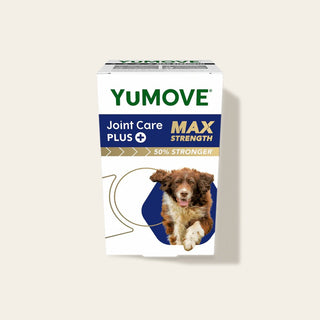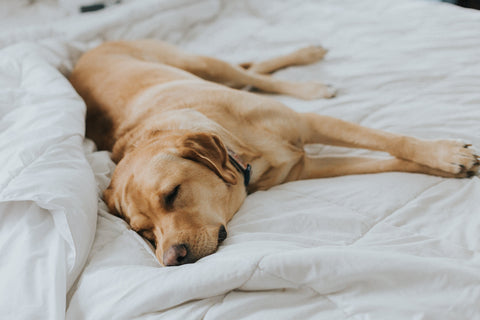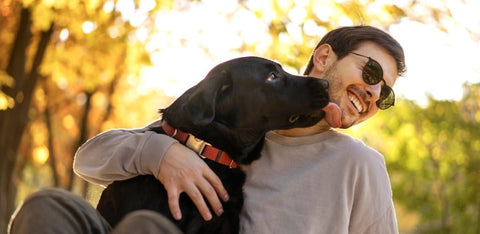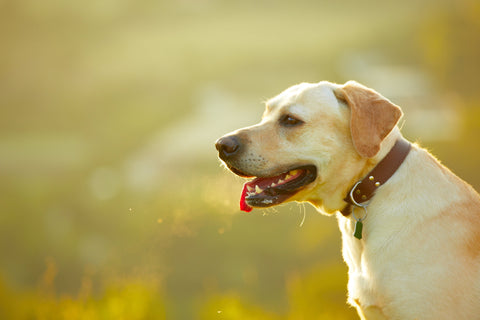
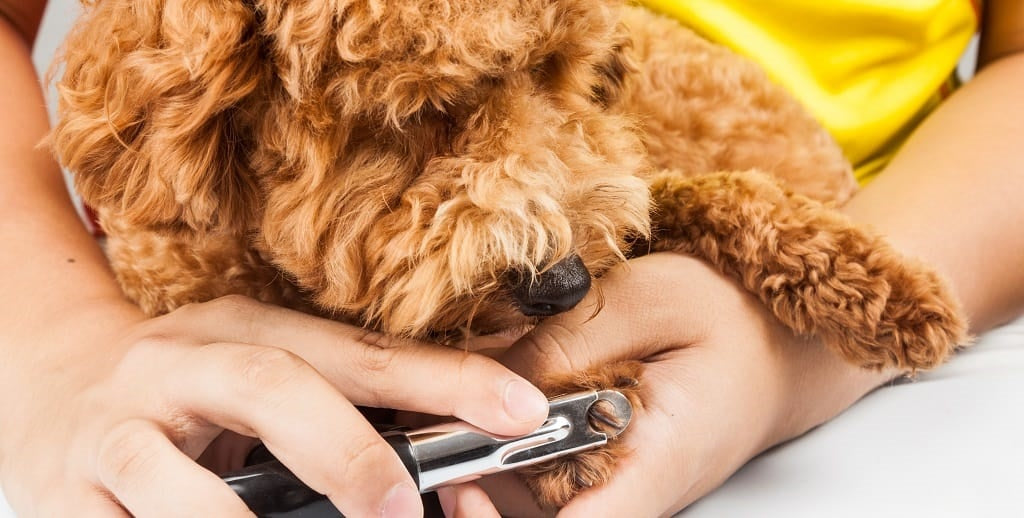
Pet health check at home
Our dogs and cats are always important to us, which means we're likely to be aware if they look or seem slightly “off”. As loving owners, we may sometimes have a ‘better safe than sorry’ attitude when it comes to our pets, but we also want to avoid unnecessary visits to the vet when we can.
So, we consulted with Chad Dodd, a vet who works with YuMOVE, to find out what you can do to care for your companion without the need for a trip to the vets. Here are a few ways you can check your pet’s health at home…
Easy ear-cleaning guide
Before we get into the top tips, it’s important to highlight that if there are signs of infection in your pet’s ears you should first consult your vet. These signs might include excessive head shaking, red and inflamed areas, or being sensitive to touch. It’s also important to keep your pet’s ears dry and aerated, because warm, moist ears are where problems are more likely to occur.
How often should you clear your pet’s ears?
Dogs' ears – If you have breeds that have more ‘droopy’ ears such as Cocker Spaniels, then their ears require more frequent cleaning, as things can get more easily trapped inside. On average, we recommend cleaning your dog’s ear once a month.
Cats' ears – Cats are less likely to need their ears cleaned and it tends to be for cat owners who are already aware that their cat’s ears regularly get a build-up of wax
The golden rules of the easy ear clean
Always be sure that your dog or cat is in a relaxed state (snoozing on the sofa perhaps) and they're comfortable with you touching their ears before you begin. It’s worth having treats at hand too, to reward your furry friend after their ear-cleaning experience.
Dog

- For your dog, open their ear wide enough to be able to clearly see inside and to give an indication of any inflammation or discharge, or bad smell, which could be sign of infection and time to consult your vet
- Once you have checked this out, use a damp cotton wool pad and slow and gently wipe around the entrance of the ear to remove any wax.
- Now use your dog-friendly ear cleaner and softly insert the tip into your dog’s ear, being sure not to insert too far, and squeeze the bottle to release the solution.
- Massage the bottom of their ear to encourage the solution to work into the canal of your dog’s ear.
- Wipe any remaining wax/debris or ear cleaner using another damp piece of cotton wool.
- To reinforce that ear cleaning isn’t so bad, remember to give your dog a treat and a cuddle.
Cat

- For your cat, you want to turn their ear inside out so you can see all the way into their ear to see if there are any signs of infection, swelling, discharge or a bad smell. If there is, you will need to consult your vet.
- If there are no signs of any debris or ear wax and your cat’s ears appear a nice, light pink colour then there is no need to clean them.
- When there is evidence of wax then you will need a cotton wool pad and a cat specific ear cleaner.
- All you then need to do is apply the cleaner to the cotton wool pads and gently wipe away debris, dirt or wax from your cat’s ear.
- Try to remember to reward your cat with a treat to remind that ear cleaner is a positive experience.
When is a nail/claw trim needed?
Dog nails - You will know that your dog’s nails need trimming if they are they visibly touching the floor when your dog is standing still. You are also more likely to hear them scratching the floor as they walk, especially if you have wooden flooring.
Cat claws – A very clear sign that your cat is in need of a claw trim is when their claws begin getting stuck in the carpet, and perhaps a less obvious sign is that they will be unable to retract their claws. The claws should never be curled round and touching the soft paw pad.

The golden rules of the trim
- Use the right equipment – try pet specific nail clippers like these.
- Try to relax your pet by offering up treats throughout, and lots of extra stroking and reassurance.
- Look out for the ‘quick’ and do you best to avoid it. The quick is the part of your pet’s claw that is provided with a blood supply and contains nerve endings. With some dog’s who have darker nails you will need to shine a torch at their nails to identify this. The quick is typically red/pink in colour and grows out towards the tip of the claw.
- Once you have identified the quick, you will want to clip your pet’s claws parallel to the bottom of their claw, avoiding the quick
- If you do unfortunately catch the quick, which can happen, then make sure you apply styptic powder to help stem the bleeding and keep the claw free of bacteria.
- Again be sure to give your cat or dog a treat after the clipping.
Depending on your pet’s attitude towards claw clipping it may be that you will need to do one claw per day. Good luck! And remember, if this is too difficult to do at home, you can book a claw clip appointment with your vet or vet nurse.
Pad/Paw maintenance
Keeping your pet’s paws healthy is critical to their daily wellbeing. It's important to check your pet’s paws and foot pads regularly and take steps to keep them healthy.
- For everyday cleaning you can use warm water on a clean cloth or unscented baby wipes to clean the surface of the foot pad and the areas between their toes and around their nails. If your pet’s pads are dry and cracked, cleaning them regularly can help prevent infections from bacteria, yeast or fungi.
- For cases where you can see significant dryness and cracking, you might try soaking their paws in Epsom salt dissolved in warm water or chamomile tea bags. This can help soften and soothe the rough patches of the foot pads, and make sure to dry the paws properly afterwards. If you notice large cracks, redness, bleeding, or strong odour, it’s best to check with your vet so they can help you determine the cause.
- To help keep your pet’s foot pads healthy, it’s a good idea to keep them away from extreme cold or heat, and be careful of the surfaces they walk on. It's very common for pets to experience foot pad burns by walking on pavements or roads on excessively hot days, so consider alternative routes or try foot booties to help protect your pet’s paws.
An upset stomach
An upset stomach in your pet can result in a variety of symptoms, ranging from lack of appetite to abnormally loose stools, or significant vomiting and diarrhoea. If your dog or cat is experiencing signs of vomiting and diarrhoea, it's best to check with your vet to see if they’d recommend a visit to the clinic. Signs of vomiting and diarrhoea can be signs of many different health conditions so it’s best to identify the cause as soon as you can.
If your pet is only showing mild signs of a tummy upset, such as a soft stool, but they still have their normal character and energy levels, your vet may recommend offering a bland diet for two to three days and using YuMOVE Digestive Care PLUS to help restore the balance of their system. A simple option for a bland diet consists of chopped up baked chicken and boiled rice. Often times pets recovering from an upset stomach just need a few days of bland food to allow their digestive system to settle and normalise. Remember to also check when they had their last worming treatment! If your pet doesn’t appear to be improving, or if the episodes of vomiting and diarrhoea, continue, you should inform your vet that they haven’t improved.
It’s also important to note that extra care needs to be taken with young animals, so call your vet immediately if your young pet has any signs of a tummy upset or lack of appetite.
Remember to keep your pet hydrated when recovering from an upset stomach. This should include providing easy access to drinking water and checking to make sure your pet is drinking adequate amounts of water throughout the day.
Teeth cleaning

Our pets don’t need their teeth cleaned twice a day like us, which is fortunate for both pet and owner! But dental health is still very important. It’s good to keep up with teeth care to reduce the likelihood of a trip to the vets. If the oral hygiene of a pet is avoided, it can lead to rotten, infected teeth which can even result in greater infection …so it’s very important!
The most popular methods to support your pet’s dental hygiene at home include teeth brushing and dental sticks. You can brush your pet’s teeth using specially designed products, such as toys and finger brushes with silicone bristles, or a human toothbrush with soft bristles. But if you use a toothpaste, it’s important to use one that is formulated for pets, because most human toothpastes use ingredients that are poisonous to cats and dogs.
Dental chews and sticks are another great way to clean your pet’s teeth regularly. They’re designed to target plaque and tartar build-up along the teeth and gums and are minimally invasive (unlike teeth brushing). Some sticks include ingredients to target the bad bacteria in the mouth, that can develop into plaque, and eventually tartar, if left to thrive. They’re also created in shapes that are designed to scrape along the tooth’s surface to reduce any build-up and keep their pearly whites shining.
The important things to remember when teeth cleaning
- Try to remain calm and positive – be gentle and don’t push past your pet’s comfort zone.
- Start young – get your puppy or kitten used to teeth cleaning.
- Use a pet toothbrush and pet-formulated toothpaste.
- Do it regularly if possible.
We hope the above has helped or even just reassured you that you are doing the right things. Check out the rest of our Health Guides for tips on how to keep your pets in tip-top shape.
